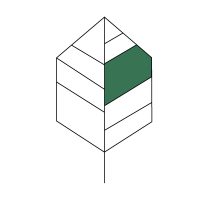Bring a Touch of Nature Indoors!
Before purchasing your greens, determine the placement of your plant in your home, office, bathroom, living room, balcony or kitchen.
Sunlight
Plants need sunlight for survival. Which brings us to the first thing in mind when deciding the best placement for your plants.
Find out where your window is facing
- South facing window:
– Provides the most light.– Light shines far into the room and still receive bright light.– Place plants a few feet into the room.
- East facing window:
– Morning sunbeams fade rather quickly.– Place plants nearer to the eastern window so that they can soak up the morning sun!
- West facing window:
– Same lighting conditions as eastward facing window but with harsher sun rays.– Draw a sheer curtain on a hot sunny day to protect your plants from sunburn.
- North facing window:
– Provides the lowest light.– Place your plants nearest to the window to keep them happy!
Simple light test
Try this simple test to determine the light level in your room.
When the sun is at its high (afternoon), place a white A4 paper at the chosen place where you want your plant to live. Place your hand in front of the piece of paper to cast a projection of your shadow.
- A well-defined shadow of your hand = bright light
- A fuzzy shadow for your hand but still recognizable as your hand = medium light
- Only a faint noticeable shadow of your hand = low light
Alternatively, check out our video to see how to use a Light Meter app.
Can my plants get sunburn?
Just like us humans, most indoor plants can get sunburnt if left exposed to direct sunlight. Indoor plants do not like direct sunlight but prefers bright indirect sunlight. Moving your plant away from the window or draw a sheer curtain at mid day to protect your plants from harsh sun rays.
What if I don’t have any windows?
If you have insufficient light, choose a low light plant. Low light plants do not need much sunlight light and will survive in rooms with insufficient sunlight. However, be sure to place it under bright light for 1 week each month to ensure your plants health.
Water
The biggest cause of damage to plants is overwatering. It is the easiest way to kill a plant and is often overlooked. Plants need good water drainage as they do not like their roots soaked in water. Most indoor plants can survive with a weekly shower depending on weather temperature and humidity.
Ensure that your pot has a hole for water to drain out. daun.com.my ensures and we have chosen pots that comes with a drainage hole. Click here to view our carefully chosen pots.
Simple watering test
- Stick your finger at the edge of your pot. If the first inch of the soil is dry to the touch, it is time to water your plant.
- Try not to wet the plants foliage with water. Gently lift its leaves and pour water till it overflows from the drainage hole at the bottom of the pot. Remove excess water after 30 minutes as plants do not like to feel like it is drowning.
- Check in with your plant every alternate days especially if the weather is really hot. Water if necessary.
- If it rains and humidity drops, refrain from watering too much as this will encourage fungus or bacteria growth if soil is constantly too moist.
- Once you have gotten to know your plants watering cycle, you can adapt your watering routine towards its needs.
- Be sure to say thank you to your plant for purifying air in your home! 🙂
Humidity
Average home humidity in is roughly 60%, which means plants can tolerate some dry air. Most plants featured on daun.com.my will fair well in average home conditions. The rule of thumb is, if you’re comfortable, they’re comfortable.
